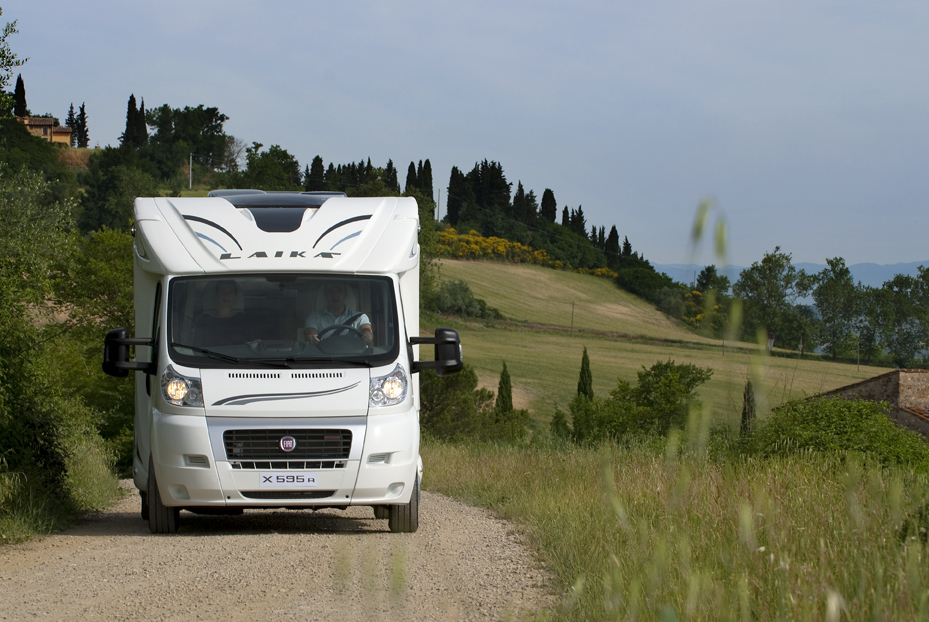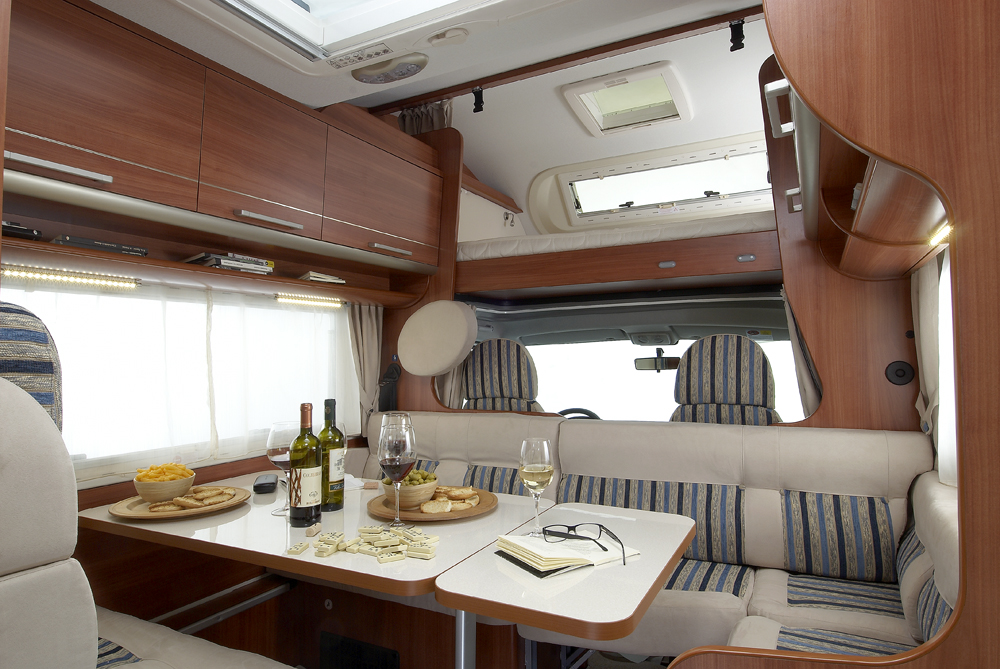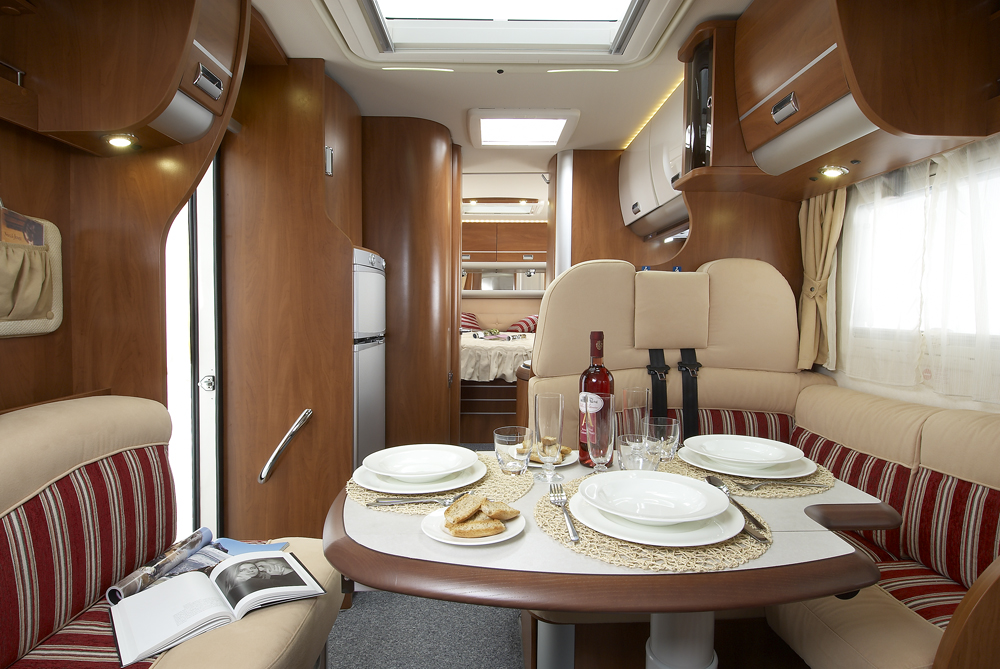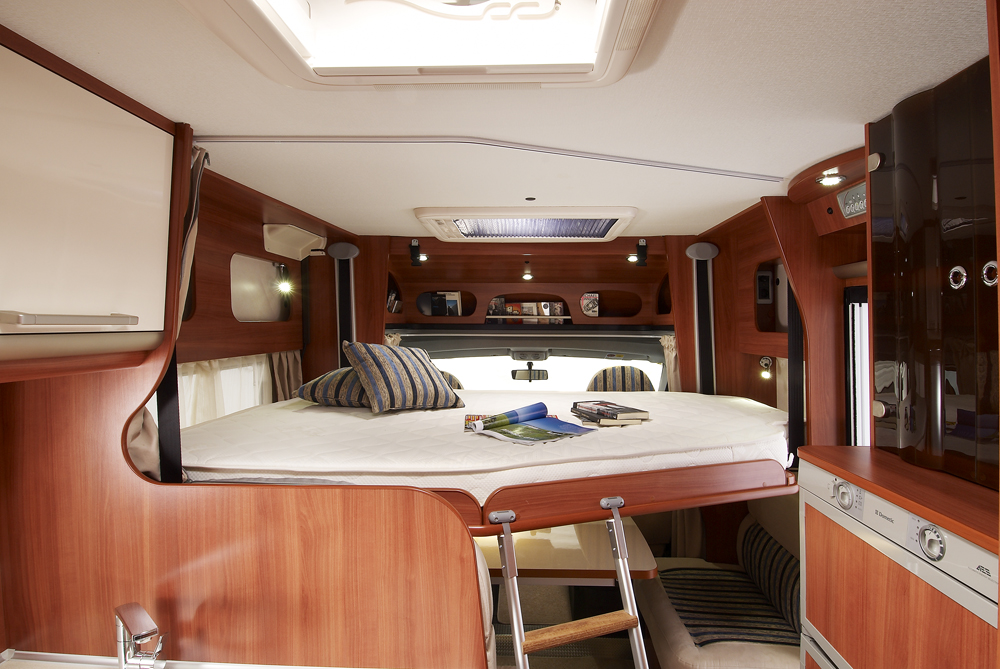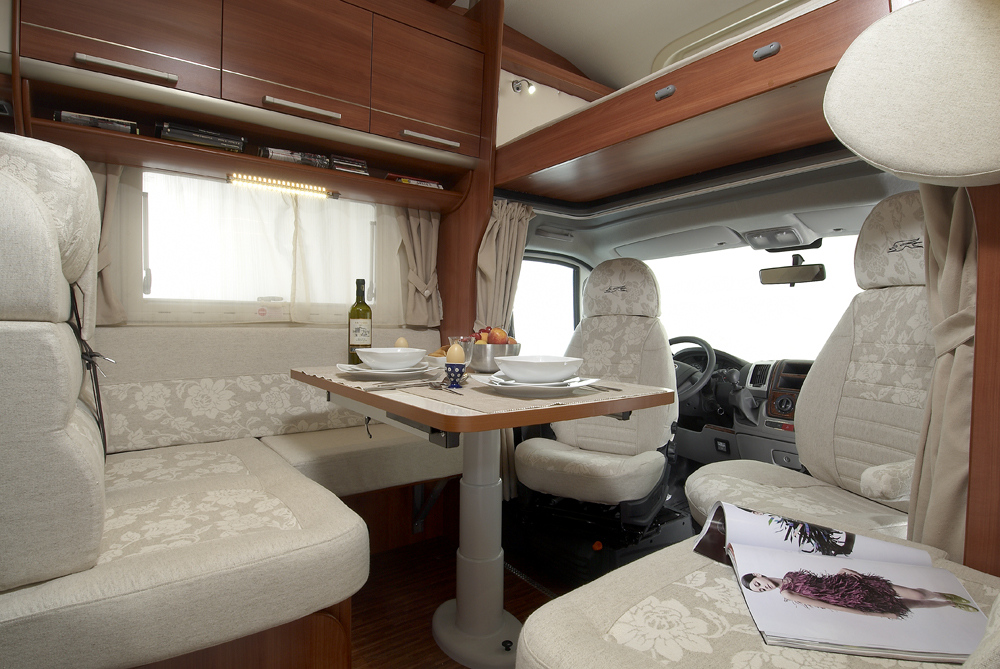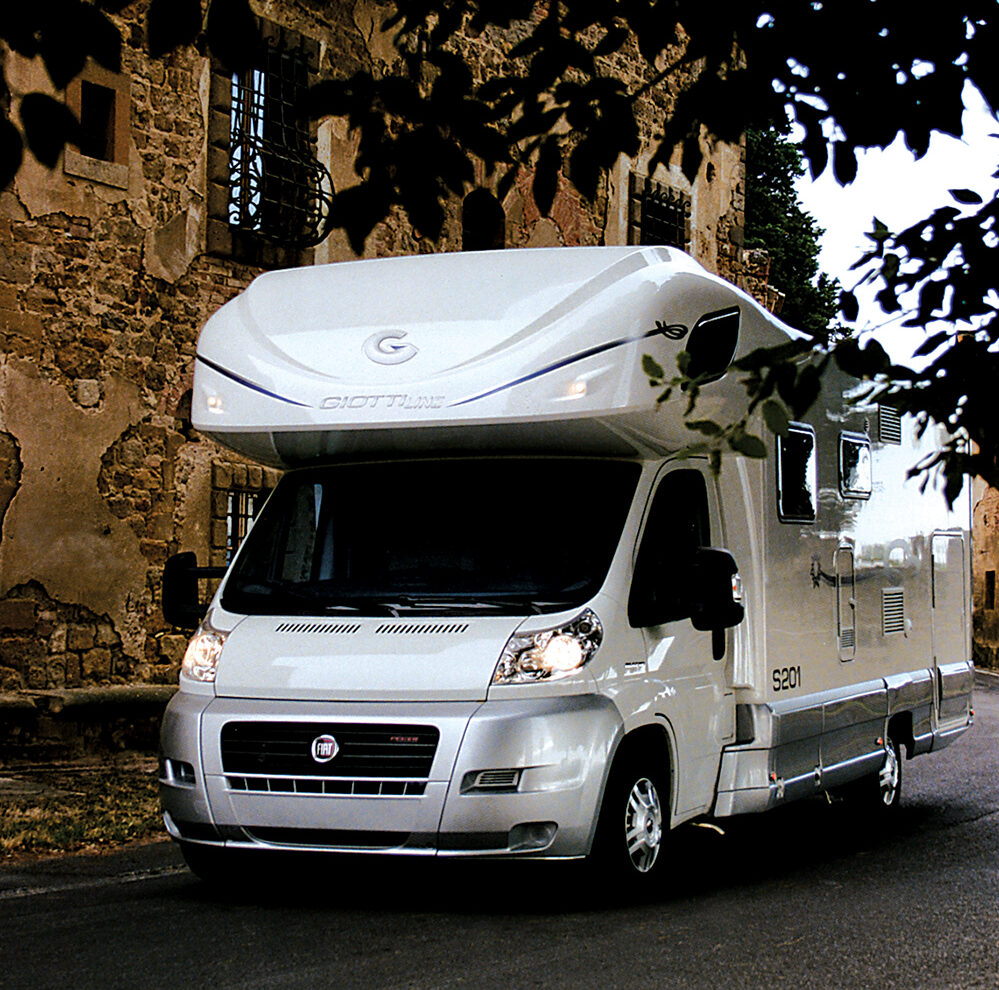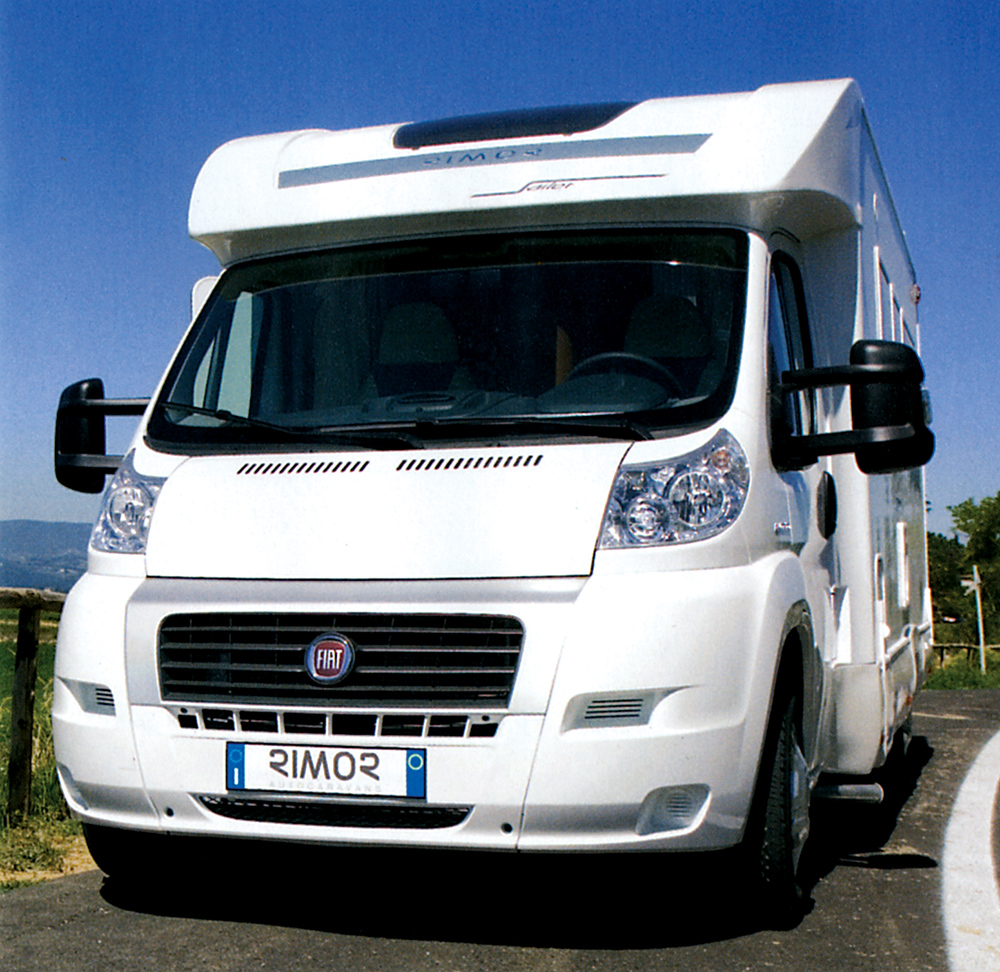From the archives…
I had the privilege of accompanying a Canadian Delegation on a trip to Italy, where we toured five motorhome manufacturing plants in Tuscany. It was without a doubt a voyage of discovery for all concerned, as we had the opportunity to explore the most scenic region of Italy, and observe the ingenious way that European RV manufacturers have dealt with the reality of rising fuel costs. The Italian motorhome manufacturers were interested in our suggestions for adapting their products to suit the vehicular and lifestyle requirements of the North American market… we had the chance to see how Italian design and engineering has been applied to the creation of some very interesting vehicles. It was a fascinating experience for all concerned, and perhaps the first step along a new road for RV enthusiasts on both sides of the Atlantic.
Text and Photos by Norm Rosen
Travellers familiar with the Tuscany region of Italy will tell you that this is one of the most beautiful areas in a country fabled for its magnificent scenery and historic significance. From the time of the Etruscans to the Roman Empire and the Renaissance, this area has been the focal point for the greatest artists, sculptors, and architects of Europe. With 3,516,000 residents in an area of 22,997 sq km, (less than half the size of Nova Scotia) the region is resplendent with rolling hills, many adorned with vineyards and orchards. This is, after all, one of the most famous wine and epicurean regions of the world.
 Our delegation stayed at the Hotel Sovestro, a lovely spot not far from Poggibonsi. Nestled into a mosaic of vineyards, we were enthralled by the beauty of the countryside. During the spare hours between business meetings and plant tours, we had the unique opportunity to walk up the country road to the medieval village of San Gimignano – a most incredible experience even for those of us who are familiar with North America’s oldest settlements. While Quebec City celebrated its 400th anniversary a few years ago, San Gimignano traces its roots back some 1200 years – there is nothing in North America that can compare to the sense of history that you experience as you walk through Saint John’s gate to enter the walled village.
Our delegation stayed at the Hotel Sovestro, a lovely spot not far from Poggibonsi. Nestled into a mosaic of vineyards, we were enthralled by the beauty of the countryside. During the spare hours between business meetings and plant tours, we had the unique opportunity to walk up the country road to the medieval village of San Gimignano – a most incredible experience even for those of us who are familiar with North America’s oldest settlements. While Quebec City celebrated its 400th anniversary a few years ago, San Gimignano traces its roots back some 1200 years – there is nothing in North America that can compare to the sense of history that you experience as you walk through Saint John’s gate to enter the walled village.
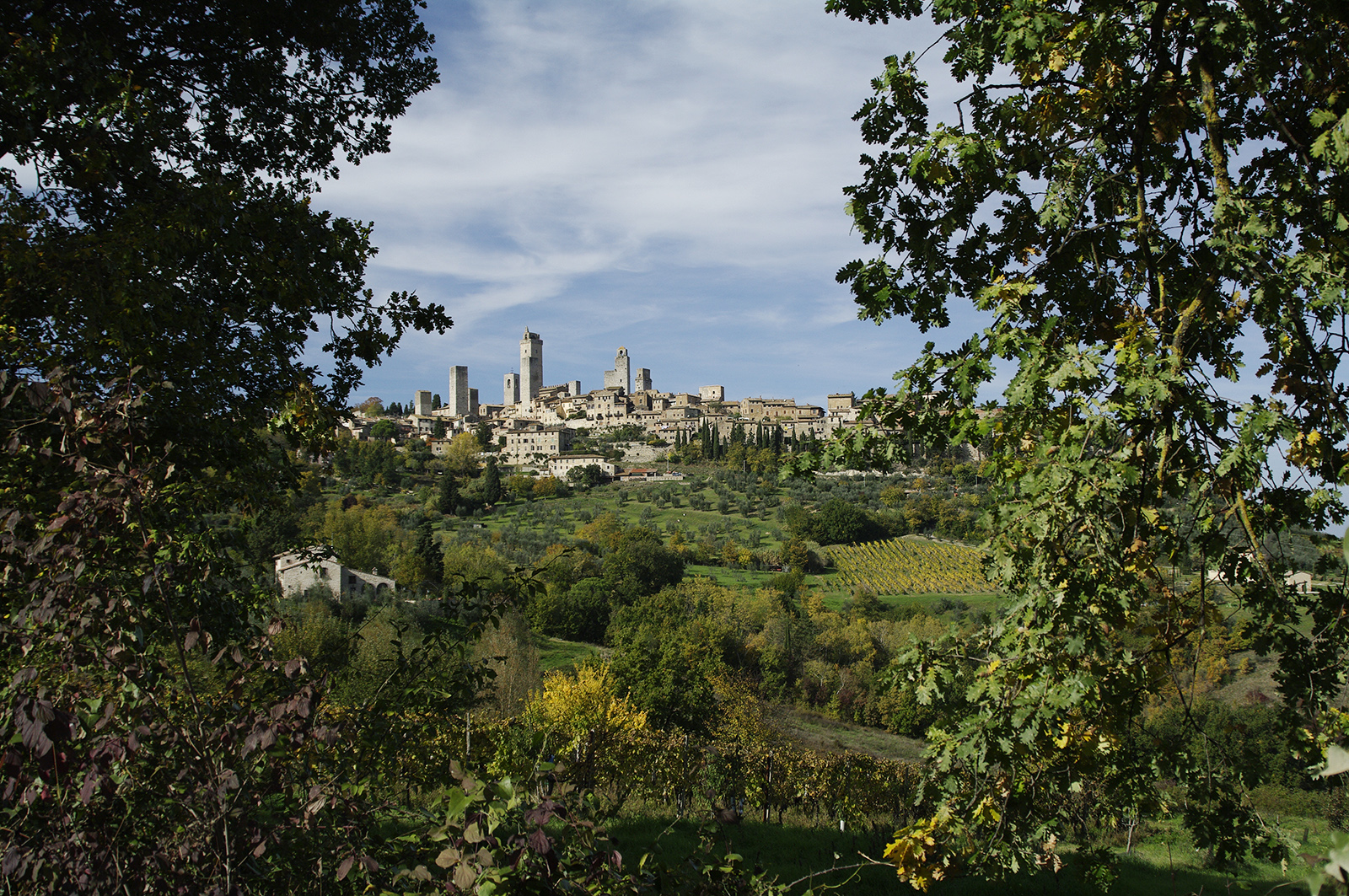
Our seven-day adventure culminated with a tour of Sienna, in the heart of the Chianti Gallo Nero. One of the best-preserved medieval cities in Italy, the ancient fortress withstood the Roman invasion, and subsequent attacks of the barbarians. Siena was one of the crucial waypoints on the Via Francigena that linked France and Rome. As we walked along the narrow streets we could almost feel the presence of the pilgrims, and the generations of artists and artisans who created the magnificent treasures of the city. The Dome of Saint Maria at the centre of the village is one of the most impressive sights in Tuscany – we spent hours inspired by the incredible beauty of the cathedral, and the many adjacent buildings that house works of art and religious relics of incalculable value.
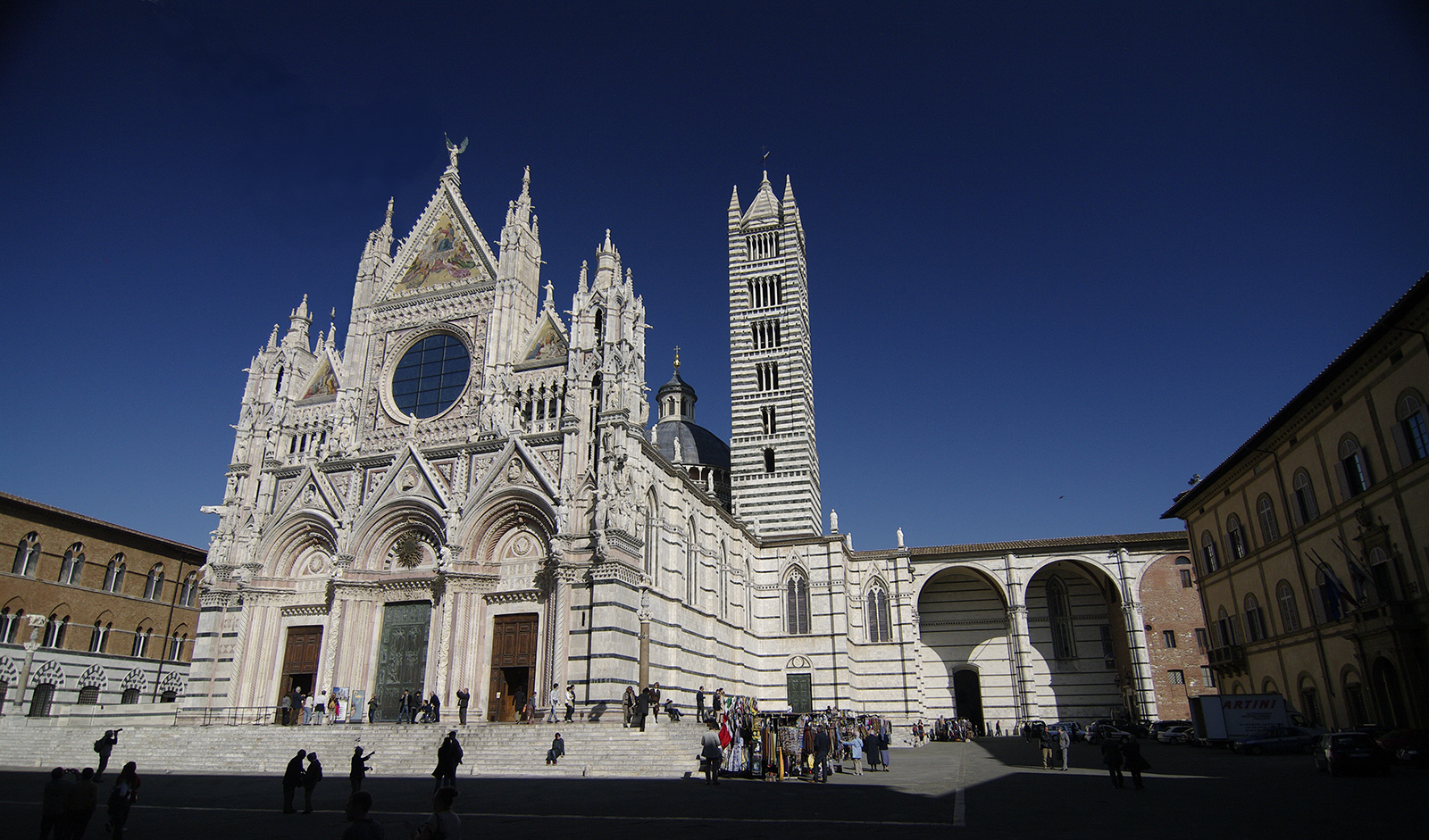
For the gourmet, a visit to Tuscany is an adventure in gastronomic delights, from the famous vintages of Chianti Classico and Brunello di Monalcino to the pecorino cheeses and cured meats, including Cinta Senese, salame toscano and delicacies made from the local cinghiale (wild boar) that are distinctive to the region.
Of course, our expedition was focused on business, rather than dining, so we concentrated on the RV manufacturing facilities. The Italian RV industry serves a European market consisting of approximately 190,000 units per year, mainly RV’s designed for travel and touring. Italian manufacturers export 40% of the units they produce, with a market value of 700 million Euros. The Italian domestic market is approximately 14,000 RV units per year.
There are 10 major RV manufacturers and 57 RV related manufacturers in Italy. The five manufacturers we visited account for 51% of the motorhomes produced in Italy.
Is There an Italian RV in your Future?
There is without a doubt a place in the North American market for compact motorhomes that are capable of delivering spritely performance and fuel efficiency in the range of 30 miles per gallon (10L / 100km). Designed for use in the rugged Italian terrain, the Italian motorhomes have no difficulty with alpine hills, and the manoeuvrability required to negotiate the tight twisting rural roads of Tuscany makes the European chassis a delightful driving experience for the North American motorist.

We have seen European motorhome chassis captivate the imagination of North American RV enthusiasts with the success of the Mercedes Benz “Sprinter” chassis. With the recent developments in the automotive industry, it won’t be long before the Fiat commercial truck chassis becomes available in North America, and with the establishment of a dealer and service network for the commercial vehicles, a full spectrum of RV models could certainly follow.
We approached automotive executives on both sides of the Atlantic for an estimated timeline for the arrival of Fiat chassis recreational vehicles in North America. The domestic corporate executives politely commented that it was not their policy to reveal their plans for the future. The European executives took a more positive approach, asking us if we knew anyone who would be interested in distributing the vehicles in North America.
As global marketing becomes the new perspective for the automotive industry, there can be little doubt that the Italian motorhomes will eventually arrive on the shores of North America. My guess is that this might occur sooner, rather than later.
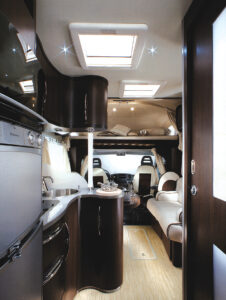
One might be tempted to ask what the Italian motorhomes offer that is not already available in the North American market. The short answer is a combination of European elegance and fuel efficiency in a compact, entry-level motorhome. The long answer is that the Italian motorhomes represent a different approach to the genre – despite the fact that they fall into the categories of class A, B, and C motorhomes, they are more compact and lighter than their North American competition. The Italian motorhomes have been designed for younger families who will use the RV as a family vehicle, rather than as a dedicated a vacation vehicle.
The desire to produce a very light weight motorhome changes the recreational application of the motorhome – while the typical North American motorhome can generally tow a boat or a utility trailer, the European designs are limited in their towing capacity. The North American approach to the “Sport Utility RV” is to have a large “garage” area where you can transport snowmobiles, ATVs, motorcycles, or even a small car. Some of the European class C and class A motorhome models have a “garage” compartment, where you can carry bicycles or perhaps a pair of Vespa scooters. The concept is similar, but the execution is much more conservative.
Of course, for the Italian motorhomes to be appropriate for the North American market there would have to be some major changes. For example, the butane fuelled heating system will have to be replaced by an LP gas version, and the electrical appliances will have to be based on 110v rather than 220v. That is within the realm of feasibility if demand from North America warrants a split in the manufacturing lines. We asked if the Italian vehicles were insulated to be appropriate to the Canadian climate, and while the measurement system differs – there is no reference to “R value” in Europe – the vehicles are used quite successfully in Scandinavia, where temperatures and road conditions are harsher than the majority of the North American environment.
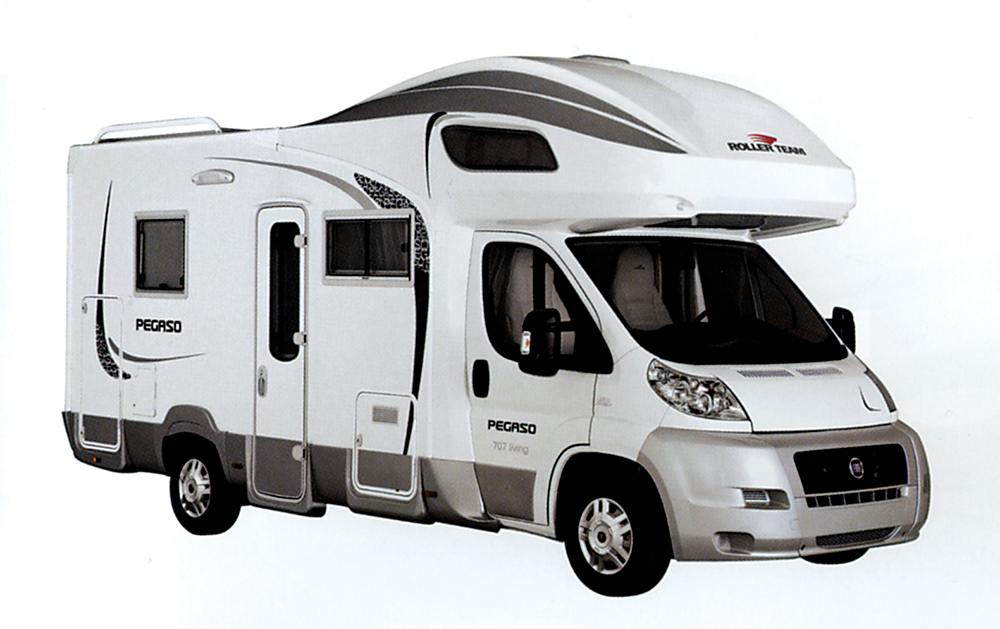
Will there be an Italian motorhome in your future? Perhaps. What is more likely to happen is that the Fiat chassis will become an option for the North American motorhome manufacturers – it would be, in all likelihood, a lower cost alternative to the Mercedes-Benz chassis.
The five Italian motorhome manufacturers who hosted our Canadian delegation are as follows:
Giottiline
Barberino Val d’Elsa, Italy.
www.giottiline.com
Laika
Tavarnelle Val di Pesa – Firenz, Italy
www.laika.it
Rimor
www.rimor.it
Sea – Trigano
Barberino Val d’Elsa, Italy
www.sea-camper.com
Trigano – Sea
San Gimignano (Siena), Italy.
www.trigano.it
Many thanks to our Italian hosts: Centro Sperimentale del Mobile E Dell’arredo; the Consorzio Casa Toscana; the Regione Toscana; and the Promozione Economica Della Toscana, and to the Italian Canadian Trade Commission who coordinated the trip.


















